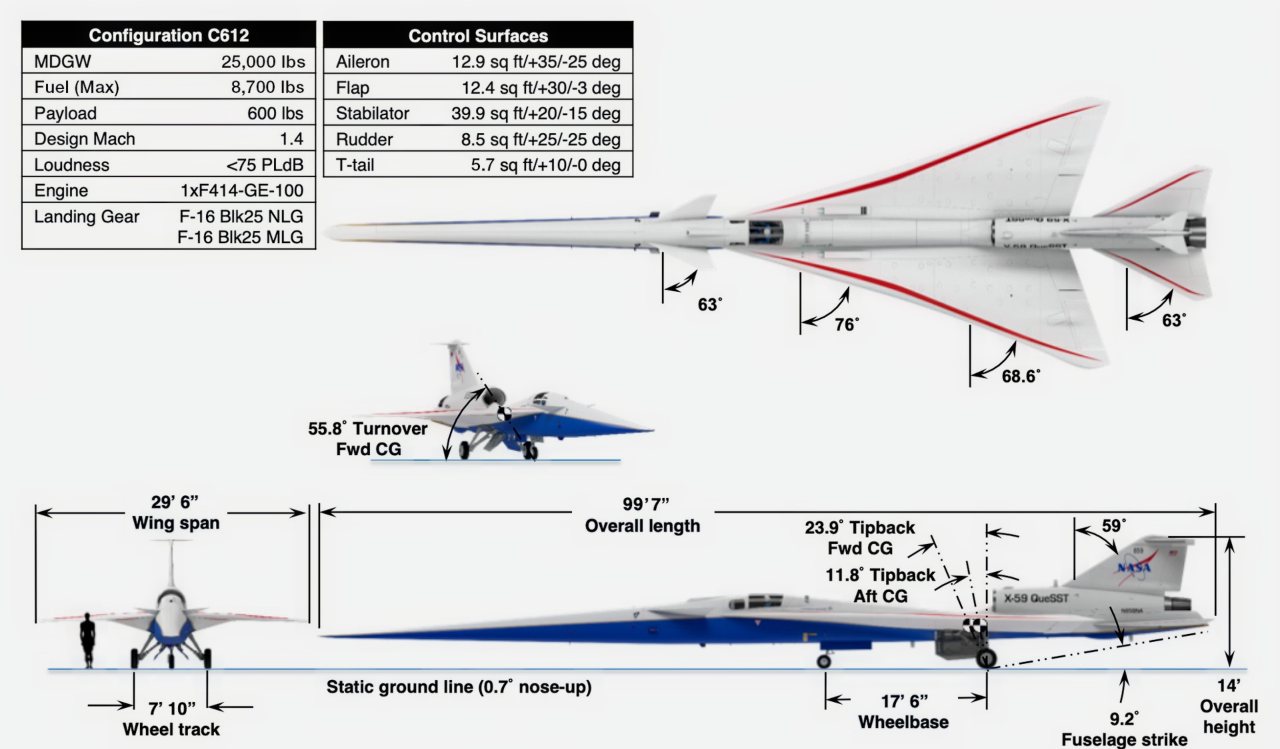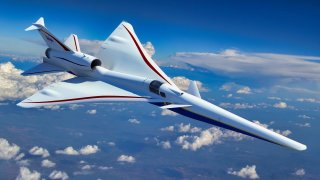X-59: NASA's New Supersonic Plane Could Be an Incredible Game Changer
Designed and built by Lockheed Martin at its famed Skunk Works facility, the X-59 is specifically shaped to quiet the perceived sound of a sonic boom that reaches the ground to that of a gentle thump, similar to a car door shutting in the distance.
The future of commercial supersonic flight will be unveiled on Friday at the famed Lockheed Martin Skunk Works in Palmdale, California. Lockheed Martin and NASA executives, along with subject matter experts, and California and Federal Government officials will be present as the NASA X-59 is rolled out.
Designed and built by Lockheed Martin at its famed Skunk Works facility, the X-59 is specifically shaped to quiet the perceived sound of a sonic boom that reaches the ground to that of a gentle thump, similar to a car door shutting in the distance.
"This is the big reveal," said Catherine Bahm, manager of NASA's Low Boom Flight Demonstrator project, who is overseeing the development and build of the X-59. "The rollout is a huge milestone toward achieving the overarching goal of the Quesst mission to quiet the sonic boom."
The X-59 is the centerpiece of NASA's Quesst mission, which has the goal of collecting community response data from flights over representative communities across the United States. NASA will employ that data to recommend an acceptable commercial supersonic noise standard to regulators to possibly repeal the current ban on supersonic flight over land and thereby change the future of commercial aviation, reducing flight times by half of what they are currently.
"Watch the unveiling of @NASAAero's X-59 aircraft, set to fly this year to test quieter supersonic flight technology. The Quesst mission could help bring a return to supersonic air travel over land. Livestream starts Friday, Jan. 12 at 4pm ET (2100 UTC)," @NASA announced on X, the social media platform formerly known as Twitter, earlier this month.
X-59 Ground Tests in Texas
Last year, the X-plane completed a series of ground tests at Lockheed Martin's Fort Worth, Texas, facility to ensure the aircraft's ability to withstand the loads and stresses of supersonic flight – or flight at speeds faster than Mach 1. During the tests, the X-59's fuel systems were also calibrated and tested at Lockheed Martin's Ft. Worth facilities. Since the airplane wasn't actually flying, tests were conducted with the aircraft sitting on hydraulic jacks that were connected directly to the structure.
In addition, structural and fuel calibration tests were completed on the aircraft in preparation for final integration and taxi testing back in Palmdale.
However, because the aircraft couldn't fly to the facilities, there had been logistical challenges to complete the tests. While the aircraft was built in California, it had to be shipped by truck to Texas in December 2022.

NASA's goal is to collect and provide data to U.S. regulators to help establish an acceptable commercial supersonic noise standard and to lift the ban on commercial supersonic travel over land, which could reduce cross-country flight times drastically.
The United States banned supersonic travel over land for non-military aircraft in 1973 due to public concern about sonic booms over populated areas, CBS News reported. NASA has continued to study transoceanic supersonic flight, which could in theory shuttle passengers from New York City to London in less than two hours.
"We're definitely ready to write a new chapter in the history of supersonic flight, making air travel over land twice as fast, but in a way that is safe, sustainable, and so much quieter than before," Peter Coen, NASA's Quesst Mission Integration Manager, said in a statement in April.
The advanced is scheduled to take flight this year. Once fully operational and tested, NASA plans to fly the aircraft over select U.S. cities in 2026 and gather feedback from the public on the sound it produces.
Author Experience and Expertise: Peter Suciu
Peter Suciu is a Michigan-based writer. He has contributed to more than four dozen magazines, newspapers, and websites with over 3,200 published pieces over a twenty-year career in journalism. He regularly writes about military hardware, firearms history, cybersecurity, politics, and international affairs. Peter is also a Contributing Writer for Forbes and Clearance Jobs. You can follow him on Twitter: @PeterSuciu. You can email the author at [email protected].


